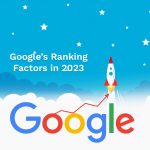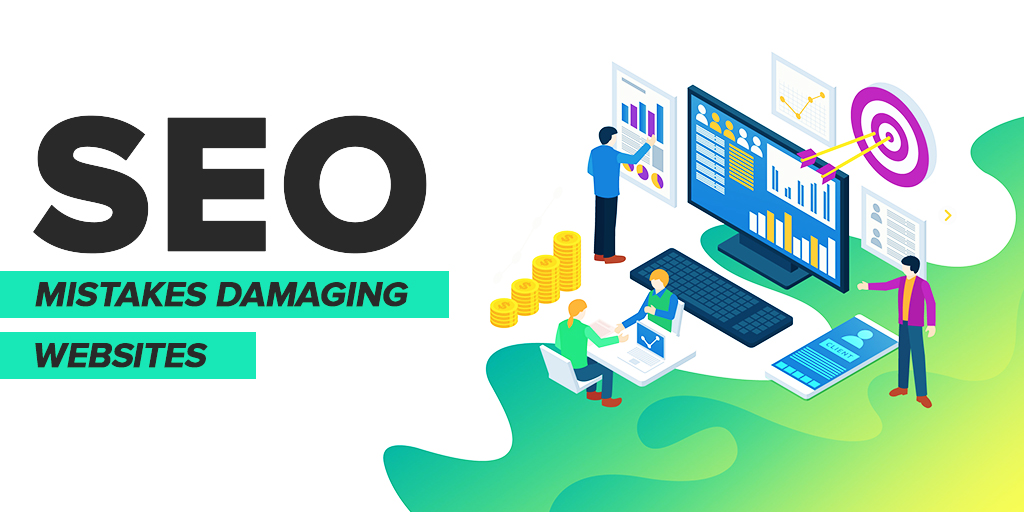It is a constant fight for webmasters to regularly address the technical flaws occurring in the website. This is very important because these issues can prevent the website from growing and it impacts the efforts of SEO professionals. Therefore, it becomes very important for the webmasters to continue reviewing the functioning of the website and remove technical flaws at the earliest.
Here in this guide, we will go through a detailed checklist of what issues a website could face and what are the impacts of those issues. Lastly, what efforts, SEO Company put in to address them or to adjust with them. This is basically a research work where more than 2 lac 50 thousand websites were researched on, that included websites belonging to the health industry, travel, sports, science, and others to find out the most common issues that were impacting the SEO efforts. In this research work, it has been analyzed –
• 310,161,067 Web Pages
• 28,561,137,301 Links
• 6,910,489,415 Images
This in-depth assessment and careful analysis gave a clear detail of the mistakes and from there; this post has come into origin. So let us straightaway jump on the first of the 27 most common mistakes that were found in the research work that were liable for preventing the growth or the SEO efforts.
Ignoring HTTP Status and Server Issues
The most common as well as the most serious and concerning thing that the researchers came across was related to HTTP status of the website. This included a number of things and here the point that deserves a mention straightaway is “ERROR 404 (Page Not Found)”. This error basically means that the server didn’t respond appropriately to the request coming from the client that could be either a search engine or a browser.
This issue has been found responsible for breaking the trust of the audiences because when this error occurs, the dialogue between the client and the server gets interrupted. In simpler words, the communication between the user and the website gets broken or interrupted and when this happens, it automatically impacts the trust of the user and as a result, SEO efforts go in vain.
The point here is that major/serious issues emerging in the server are not as responsible as this minor issue in making a business lose its audience because with serious issues, the result comes in the form of “inaccessible content”. But yes, if they continue to prevail for a long time, they too will start impacting all the SEO efforts of the professionals because then, the search engines will fail to find any suitable results on your site for the user.
To Know more you can read Biggest SEO Mistakes Damaging Websites in 2020
Mistakes Affecting your HTTP Status
4XX ERRORS
These errors mean that the page was broken and hence, the search engine failed to access it during the search query. These errors can also come in functional pages, when they are being blocked by some issues from being crawled by search engine robots.
PAGES NOT CRAWLED
This is another major issue arising in terms of HTTP and it mainly arises when the page could not be reached. This generally happens for one of the following two reasons.
- The response time of your website is over five seconds
- Your server denied access to the page
BROKEN INTERNAL LINKS
These are basically the links that take users to a non-functional or non-existing page and when this happens, it has a huge impact on user-experience as well as search engine optimisation.
BROKEN EXTERNAL LINKS
Broken external links are as harmful as broken internal links for user-experience as well as SEO, because they lead users to pages that don’t exist on another site.
BROKEN INTERNAL IMAGES
These are the images that are flagged and those that do not exist and experts say that this issue can also arise when the URL has been misspelt.
Other than these, a number of issues could be there related to HTTP and some have been discussed here.
- Permanent Redirects
- Temporary Redirects
- Under-Optimizing Meta Tags
People don’t realize the importance of Meta-Tags and often take them very lightly. They are basically very helpful for search engines in identifying the subject matter of the page more precisely and connect it with the keywords to present in the searches being made. Therefore, it is very important to create a Title Tag accurately because accurate Title Tag means using relevant keywords to create an active and useful link for the users to click in SERPs or search engine results.
Other than Meta-Tags, Meta Descriptions are also very useful, as they provide additional opportunities to include keywords, long-tail keywords and relevant phrases. However, in terms of Meta-Descriptions, experts recommend that it should be as unique as possible and if tailored or customised, they will generate even better results.
Having a tailor made Meta-Description is always a good idea, because if you leave it, the search engine would create its own and that would be based on the keywords entered by the user in the query. The problem is that this way, it can be mismatching at times and stay limited to only the queries made in relation to those keywords only.
In Meta Tags and Meta-Descriptions, it is recommended to use as appropriate keywords as possible, but the conditions related to the length should be followed. Not to mention that there should be no plagiarism at all in the title tags as well as Meta description.
It was found in the research that mostly ecommerce companies and those belonging to the fashion industry were offering unique value in other areas of the landing page’s body copy. They were doing this because in these and several other similar sectors, creating an unique meta-description for every service or product was practically not possible. Yes, unique Meta-Data is possible and these sectors should seriously think about it, as it is the best way of maximising its impression on the users, as well as in the search engine results.
The Most Common Meta Tag Mistakes That May Hurt Your Rankings:
DUPLICATE TITLE TAGS AND META DESCRIPTIONS
This is certainly a huge problem as far as search engine optimisation is concerned because when there are two or more pages with the same titles and descriptions, it gets difficult for search engines to properly determine relevance and in turn, rankings.
MISSING H1 TAGS
H1 tags are very important from the search engine’s point of view, as they help search engines in determining the exact topic of the content. If they are missing from the core function of the website, Google would not be able to understand your website and as a result, the website will not read or present in search queries made by the user.
MISSING META DESCRIPTIONS
If a well-compiled Meta-Description is not there, again search engines will fail to understand the relevance of the website with the query being made. Because of this, it will discourage users to avoid clicking and as a result, CTR or CLICK THROUGH RATE would get affected enormously.
MISSING ALT ATTRIBUTES
ALT Attributes are also very important in terms of search engine optimisation and when they are missing from the core mechanism, the relevance would be lost and thereby impact user experience as well as engagement.Let’s not forget the fact that ALT Tags provide search engines and visually impaired people with descriptions of the images in your content.
DUPLICATE H1 TAGS AND TITLE TAGS
Duplicity or plagiarism is harmful for any website and when it is seen in H1 Tags as well as Title Tags, it can be even more destructive for the website and SEO efforts.
When these two things are the same on any given page, the website will totally miss the opportunity to rank for other relevant keywords and it will also look over-optimised at the same time.
DUPLICATE CONTENT
The website will be flagged by “site audit tool” immediately when the web pages of your website have the same URLs or they are copied. The good thing is that these issues can be resolved by adding a rel=“canonical” link to one of the duplicates or using a 301 redirect.
Following this, there are several other errors related to the duplicity that can impact the search engine optimisation efforts of the webmasters. Some of them are –
- Duplicate H1 tags and title tags
- Duplicate Meta descriptions
- Neglecting Internal and External Link Optimization
In terms of internal and external links, this needs to be known that Google and even all other search engines will not rank the sites that deliver a bad user-experience to the audiences.This user experience can be really bad for the audiences, if there are no provisions of internal and external link optimisation. These are basically the links that will guide the visitors throughout the website.
In this research, it was revealed that almost half of the websites that were researched were having issues related to internal as well as external links. This was a clear sign of webmasters not paying close attention and as a result, it was found that their individual link architectures were not optimized.The main problems were having underscores in the URLs, contain No-Follow attributes and are HTTP instead of HTTPS and all these issues would impact the rank as well as SEO efforts made by SEO experts.
These broken links can be found very easily with the help of SITE AUDIT TOOL and as you find them, as a webmaster, it would be your first responsibility to identify the most harming ones. This harm could be on the SEO or the user-experience and as you’ll have to fix them in priority.
Common Linking Issues That May Impact Your Rankings:
LINKS THAT LEAD TO HTTP PAGES ON AN HTTPS SITE
These links that lead to old HTTP pages can result in an unsafe dialogue between the user and the server and therefore, it is an important part of any webmaster’s responsibilities to check that all the links are up-to-date.
URLs CONTAINING UNDERSCORES
Underscores are also a major matter of concern, as far as search engine optimisation is concerned and they too need to be checked. This is very important because there is a tendency of search engines to interpret “UnderScores” incorrectly and as a result, they incorrectly document your site’s index. The solution to this is using “Hyphens” instead or “underscores”.
Some Other Common Linking Mistakes Include:
- Broken Internal Links
- Broken External Links
- No-Follow Attributes In External Links
- Pages With Only One Internal Link
- Page Crawl Depths Of More Than 3 Clicks
Making Things Difficult for Crawlers
Another major issue found in this research is that crawlability and this can be a huge distress for SEO experts .The crawlability issue in a website is a huge matter of concern and a lot of damage can be incurred in the search engine rank because of this.
Therefore, these issues should not be assumed as minor and it is the responsibility of the webmasters to address them irrespective of whether they are minor or major. Ignoring them could be harmful for the entire website as well as SEO efforts,
Sitemap.xml files can be immensely helpful as far as search engine optimisation is concerned because with them, the search engines would be able to crawl successfully to identify and find some specific URLs. These are the URLs that would exist across the website and allow them to crawl and understand the website more outstandingly.
The Most Common Problems Encountered by Website Crawlers:
NO-FOLLOW ATTRIBUTES IN OUTGOING INTERNAL LINKS
These are again a serious threat in terms of SEO because internal links that contain the no-follow attribute would block any potential link equity from flowing through your site.
INCORRECT PAGES FOUND IN SITEMAP.XML
The webmasters should ensure that there are no broken links is the sitemap.xml and for this, it is important to check the sitemap for any redirect chains and non-canonical pages. If there are any, the webmaster should immediately resolve the issue and ensure that they return a 200 status code.
SITEMAP.XML NOT FOUND
If there is no sitemap.xml at all, you will see that it’ll become more difficult for search engines to explore or crawl and finally, index the website in search engine results.
SITEMAP.XML NOT SPECIFIED IN ROBOTS.TXT
If there is a sitemap.xml, but excluding robot.txt file, this will also be a harmful situation for search engine optimisation. In the absence of a robot.txt file, the search engines would fail to understand the entire structure of the website and as a result, exclude it out from the search results.
Other common crawlability mistakes include:
- Pages Not Crawled
- Broken Internal Images
- Broken Internal Links
- URLs Containing Underscores
- 4xx Errors
- Resources Formatted As Page Links
- Blocked External Resources In Robots.Txt
- No-Follow Attributes In Outgoing External Links
- Blocked From Crawling
- Pages With Only One Internal Link
- Orphaned Sitemap Pages
- Page Crawl Depths More Than 3 Clicks
- Temporary Redirects
The Most Common Issues with Website Performance:
SLOW PAGE (HTML) LOAD SPEED
The load speed is basically the time taken by a webpage to be ready to be accessed. This loading time should be as less as possible and if it is more in your website, the webmasters need to resolve them.
UNCACHED JAVASCRIPT AND CSS FILES
This is another very crucial issue with the websites and mainly happens if browser caching is not specified in the response header.
UNMINIFIED JAVASCRIPT AND CSS FILES
Another very important issue that can impact SEO efforts is related to unminified JavaScript and CSS files and they are actually a serious concern. Experts and SEO professionals add that to resolve this issue, a webmaster will only have to remove unnecessary lines, comments and white space to improve page load speed.
Conclusion:-
Whether your site is suffering from crawlability issues preventing pages from being indexed, or duplication issues, you can use this checklist to check . Make a habit of looking after your SEO health with some tools like SEMrush and many more .





